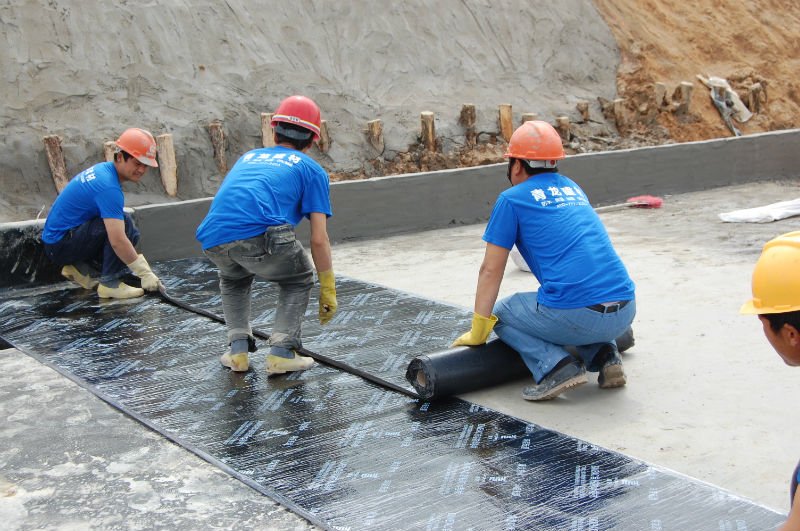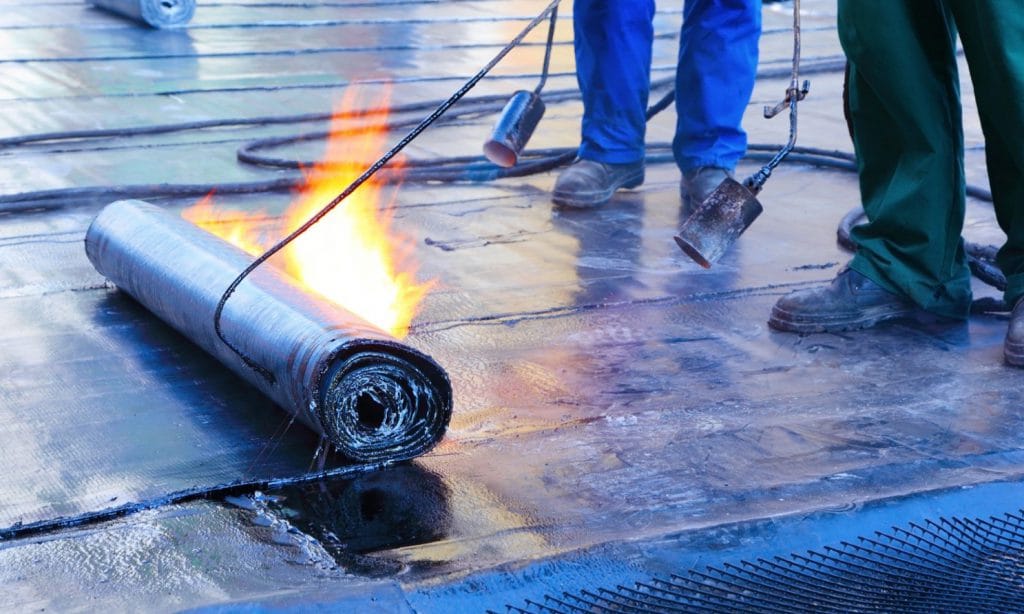How Waterproofing Works: A Detailed Check Out Methods and Technologies
Waterproofing is important for safeguarding frameworks from moisture-related damages. It involves numerous techniques and technologies that create obstacles versus water intrusion. Typical methods, such as compacted clay, exist together with modern technologies like liquid-applied membrane layers. Recognizing the subtleties of these methods is vital for reliable application. The effectiveness of any waterproofing remedy pivots not only on the techniques made use of but also on continuous upkeep and assessment. What are the vital aspects that affect long-term performance?
Understanding the Fundamentals of Waterproofing
Waterproofing is an important procedure that protects frameworks from water intrusion, which can result in substantial damages gradually. This method includes the application of different products and techniques designed to develop a barrier versus dampness. The primary objective is to avoid water from permeating surfaces, which can trigger deterioration, mold growth, and structural instability.Various elements affect the selection of waterproofing method, including the sort of structure, its area, and ecological conditions. Recognizing the physics of water activity and the residential properties of different products is essential in selecting a reliable waterproofing solution.Effective waterproofing not only safeguards structures but additionally improves their longevity and stability. Normally, it is integrated right into the design phase of building and construction to guarantee extensive security. As awareness of water-related concerns grows, the significance of understanding waterproofing principles becomes progressively clear to designers, home builders, and property proprietors alike.
Typical Waterproofing Approaches
Standard waterproofing methods have actually been used for centuries, relying upon tried and true strategies and products to safeguard frameworks from water damages. Among the earliest approaches involves making use of clay, which, when compressed, creates a natural obstacle against dampness. In addition, bitumen, a sticky, black material stemmed from petroleum, has actually been employed for its water-resistant buildings, commonly put on roof coverings and foundations.Another method involves the application of lime-based plasters, which supply a breathable layer that allows wetness to leave while protecting against water access. Thatch roof, a standard method still seen in some societies, uses exceptional waterproofing due to its firmly packed straw layers.Moreover, using rock and block has actually projected, as these products are naturally immune to water when effectively installed. Generally, conventional waterproofing methods highlight the importance of picking appropriate products and building practices to enhance longevity against water invasion.
Modern Waterproofing Technologies
Advancements in modern waterproofing modern technologies have transformed the method frameworks are safeguarded from water damage. Cutting-edge approaches such as liquid-applied membranes and advanced sealers have actually improved the effectiveness and flexibility of waterproofing remedies. These modern technologies permit smooth application, minimizing the danger of leakages and guaranteeing thorough protection over complicated surfaces.Moreover, the integration of wise innovations, such as wetness sensing units and automated surveillance systems, allows real-time evaluation of waterproofing performance. This proactive strategy promotes prompt upkeep and minimizes long-lasting fixing costs.Additionally, advancements in spray-applied coverings supply quick application and outstanding attachment, adapting to numerous substratums while giving durable defense. Strategies like polymer-modified systems additionally boost versatility and toughness, making them appropriate for varied settings. In general, modern waterproofing innovations not just alleviate water breach yet also add to the long life and sustainability of frameworks, noting a significant change in the industry.
Products Made Use Of in Waterproofing
The efficiency of waterproofing services heavily counts on the products utilized in their application. Numerous materials are used to develop barriers against water access, each with distinct residential properties matched for different atmospheres. Commonly utilized products include membranes, coatings, and sealants.Liquid-applied membrane layers, commonly made from polyurethane or acrylic, develop a smooth barrier that adapts to complicated surfaces. Sheet membranes, commonly created from rubber or polycarbonate, offer toughness and are optimal for larger areas. In addition, cementitious waterproofing materials, made up of cementitious compounds, give outstanding adhesion and flexibility.Sealants made from silicone or polyurethane are important for joints and joints, ensuring complete defense. Sophisticated materials, such as geo-composite membrane layers, combine numerous functions, improving efficiency. Overall, the option of waterproofing products is important in achieving resilient and reliable water resistance, tailored to particular job demands and environmental problems.
Typical Applications of Waterproofing
Waterproofing plays a vital role in different sectors, ensuring the durability and honesty of structures. Typical applications include household services that safeguard homes, business framework that safeguards services, and commercial setups that need robust protection versus wetness. Understanding these applications highlights the value of waterproofing in keeping both safety and security and functionality across various atmospheres.
Residential Waterproofing Solutions
Numerous house owners deal with obstacles with dampness invasion, making efficient domestic waterproofing remedies crucial. Different methods exist to address this issue, consisting of exterior and interior waterproofing systems. Inside solutions usually include the application of sealers and coverings to basement wall surfaces, which help avoid water seepage. Outside methods normally include the installation of water drainage systems and waterproof membranes that draw away water away from the foundation.Additionally, house owners might think about sump pumps to get rid of water buildup and dehumidifiers to manage humidity levels. Proper grading and using gutters additionally play an important function in handling water circulation around the home. By executing these techniques, home owners can significantly lower the risk of water damages and mold and mildew growth, ensuring a dry and risk-free living atmosphere.

Industrial Infrastructure Security
Efficient waterproofing solutions play a crucial role in the protection of business infrastructure. Drainage & waterproofing company Omaha. These methods are necessary for securing buildings, parking frameworks, and bridges from water damages, which can compromise architectural stability and lead to expensive fixings. Typical applications include the setup of membrane layers, coverings, and sealants that develop obstacles versus dampness infiltration. Areas such as cellars, roof coverings, and outside wall surfaces are often prioritized to assure long life and toughness. Furthermore, waterproofing systems can boost energy efficiency by preventing water-related concerns that might bring about mold development and deterioration. By applying durable waterproofing measures, building proprietors can shield their financial investments and keep functional efficiency, eventually adding to the general sustainability of business centers
Industrial Applications Overview
While numerous sectors face unique obstacles, the need for reliable waterproofing options stays a consistent in industrial applications. Industries such as production, building and construction, and power often experience atmospheres where moisture exposure can threaten architectural integrity and operational effectiveness. In producing facilities, waterproofing is critical for protecting machinery and products from water damages. In construction, it safeguards foundations and cellars versus groundwater infiltration. The power industry relies on waterproofing for the security of tools in hydroelectric plants and overseas structures. Furthermore, food processing industries use waterproofing to ensure hygiene and conformity with safety and security standards. On the whole, efficient waterproofing solutions are important for enhancing sturdiness, safety and security, and performance across different industrial setups.
Upkeep and Durability of Waterproofing Solutions
Although waterproofing solutions are made to supply long-term protection versus dampness invasion, normal upkeep is vital to guarantee their effectiveness and longevity - Water Solutions Omaha. Regular examinations play a substantial function in identifying possible problems such as splits, peeling off, or signs of water damage. Addressing these problems promptly can Sump pump discharge drainage Omaha prevent additional wear and tear and expensive repairs.Additionally, cleansing the surface area of waterproofed locations helps get rid of dust and particles that might compromise the integrity of the waterproofing obstacle. It's likewise advisable to reapply protective finishings or sealants as recommended by makers to keep optimal efficiency. Ecological factors, such as UV exposure and extreme weather problems, can impact the lifespan of waterproofing products, making normal evaluation important
Frequently Asked Concerns
Can Waterproofing Be Applied in Winter?
The concern of using waterproofing in winter raises issues regarding adhesion and healing. Lots of products might not execute at their ideal in low temperature levels, requiring careful option and consideration of certain guidelines for reliable application.
For How Long Does Waterproofing Generally Last?
The duration of waterproofing performance varies based upon materials and environmental factors. Typically, it can last from 5 to ten years, however regular upkeep and evaluations are vital to assure peak performance and longevity.
Is Do It Yourself Waterproofing Effective and Safe?
The effectiveness and safety and security of do it yourself waterproofing depend on numerous elements, consisting of worldly high quality and application strategy. While some people achieve sufficient outcomes, others might come across concerns that endanger long-term protection and architectural integrity.
What Are the Indicators of Failing Waterproofing?
Indicators of falling short waterproofing include visible water discolorations, peeling paint, mold growth, moldy odors, and wetness in walls or ceilings - Water Solutions. These signs recommend jeopardized obstacles, necessitating punctual evaluation and possible removal to stop further damage
Just how Do I Choose the Right Waterproofing Specialist?
